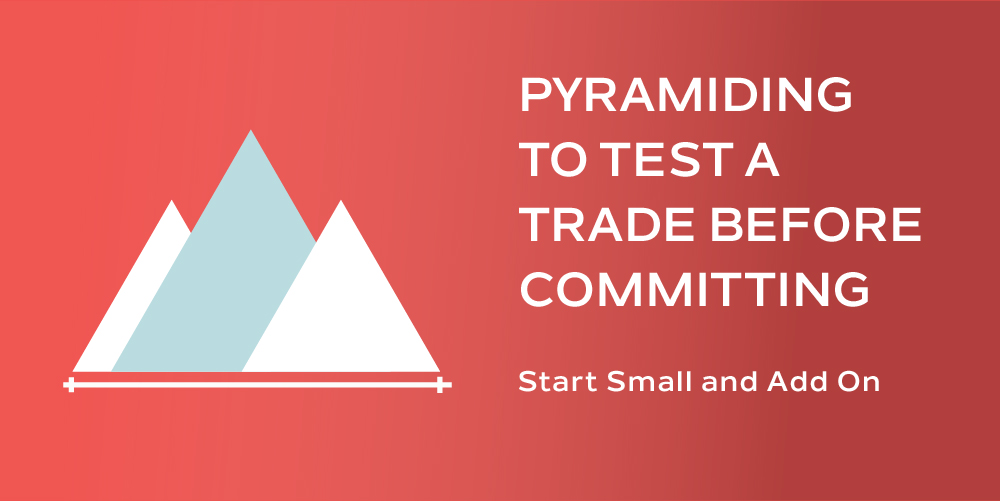
If only you could test drive a trade before taking it. Imagine what that could potentially do for your trading results.
Well, guess what. There is a method for taking a trade for a test drive before fully committing to it—it’s called pyramiding.
Pyramiding is a method of trading in which a smaller initial position may be added onto if the trade moves favorably. When performed properly, pyramiding allows the trader to potentially accumulate a large position, without necessarily adding more risk.
One of the biggest potential benefits of this strategy is that it starts with a relatively small position. If the trade is no good, you may get stopped out on 25 shares of stock rather than 100 for example.
This allows you to “test” the trade before putting more capital to work and adding more risk.
As the trade moves in your favor, you can look to add more shares or size at certain intervals and trail your stop. In doing so, you may potentially see larger profits if the market continues to move in your favor without adding additional risk.
Example:
- Buy 25 shares of stock XYZ at $40 per share and place the initial stop-loss at $39 per share.
- If the trade is bad and your stop-loss is triggered at $39, you will lose $1 per share X 25 which is $25 plus transaction costs.
- If XYZ starts to move higher, you could look to buy an additional 25 shares once the stock hits $41 per share. At this point, you could move your stop-loss to $40.
- Now your position size has doubled. Your risk, however, remains just $25. This is because if the shares come back down to $40, your buy at $41 will be a $1 loser but your initial long at $40 will be a scratch.
- The position may be added onto at additional increments, and if the stop-loss is adjusted as well, you can potentially build a large position without adding additional risk.
This method of trading allows you to “test the waters” before fully committing to a trade or position. While many of these trades may end up getting stopped out with scratches or small losers, the occasional monster winner will hopefully be enough to more than make up for the trades that didn’t produce profits.










